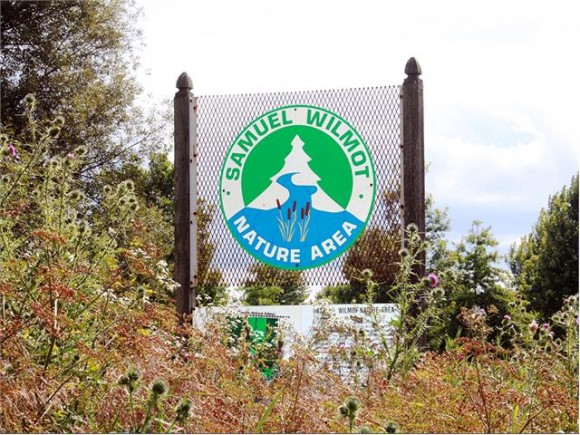In his book How to Think Seriously About the Planet, British philosopher Roger Scruton proposes a conservative approach to environmentalism rooted in oikophelia: a love for one’s home. The argument should resonate with many Canadians whose self-image includes an abstract love for Canada’s vast uninhabited wilderness. Although early explorers and settlers sought to assert their “dominion” over nature, if only as a way to survive the harsh climate and menacing beasts of the forests, many also felt a strong impulse to conserve and protect the “great white north” from the environmental mess humans had made of western Europe. That sensibility runs deep in the Canadian psyche.
The monarchs and oligarchs of Canada’s founding European nations saw only a vast storehouse of resources to be exploited for their benefit. But the people who actually explored the new world, harvested its fish, furs and timber, and broke its land for farming, were imbued from the beginning with a desire to make things better, not just economically, but environmentally. These, after all, included the Scots dispossessed by the Highland Clearances, the Irish victims of the potato famine, and the English refugees from the perilous coal mines and stinking factories of the Industrial Revolution.
The state had little to do with the Canada’s founding environmental ethos. Although Ottawa created the first national park in 1885 – at Banff – it’s first serious attempt at environmental protection did not come until the National Parks Act of the 1930s. Prior to that, private individuals and groups led conservation efforts in Canada while pursuing their self interests. The most substantive calls for environmental regulation came from natural resource developers and recreational sporting associations.
Canada’s founding environmentalists
One of Canada’s earliest and most influential conservationists was Ontario commercial fisherman Samuel Wilmot. In 1866, Wilmot developed a hatchery system for Atlantic salmon as he saw the fish stock depleting in his family-owned run on a tributary running into Lake Ontario. Although small hatcheries already existed in Europe and North America, largely for private recreational sporting clubs, Wilmot created North America’s first commercial scale fish hatchery. It proved so successful that Ottawa supported its expansion into Atlantic Canada. Wilmot was also very influential in designing federal policy and regulations for commercial and game fisheries in Upper Canada.
Wilmot displayed a Burkean understanding of trusteeship of the land; developing and preserving natural resources for future generations. And he was far from alone in his green conservative approach to sustainable economic development. The history of Canada’s primary natural resource industries includes many other examples of conservation stewardship.
Among them was lumberman John Little, an Irish immigrant who settled near Caledonia, Ontario in the early 1800s, and became one of the first voices to call for more responsible forestry development in the province. Europe had been harvesting Canadian timber since the 1600s. Britain’s Royal Navy created and maintained a global empire using ships built from New Brunswick pine. When John Little raised the alarm about Ontario’s over-foresting he was initially met with indifference from the public and government. The bulk of support for conservation came from other entrepreneurs in the lumber industry who were also experiencing the effects of environmental degradation. Little was followed by other conservationist-entrepreneurs including John Langton, who led calls for better land-use designation for clear-cutting as well as more protection for new-growth forests.
The earliest and most effective organized wildlife conservation initiatives in Canada were voluntary groups of hunters and anglers concerned with the sustainability of their recreational pursuits. A typical example was the Wentworth Society for the Protection of Game and Fish. Established in 1860 in Upper Canada, it successfully lobbied government to designate specific zones for angling and commercial use in their local lakes. These grassroots initiatives were highly responsive to unique local environmental circumstances, as opposed to top-down, one-size-fits-all regulation by governments.
The modern environmental movement often portrays itself as a relatively new phenomenon, a product of the mid-20th century counter-culture revolution. In fact, Canadians had been organizing to preserve and protect their environment for at least a century before that. As settlement and development accelerated, powered by rapid technological advances, there was an acute sense that the wilderness was rapidly disappearing. Across the nascent country, in communities large and small, voluntary private associations sprang up to protect the local environment. For example, the Winnipeg Game Protective Association, the Macleod Game Protective Association in southern Alberta, and Fernie Game Protective Association in southeastern British Columbia all came into existence at roughly the same time in the late 1800s. They were the natural result of a citizenry that felt best equipped to deal with environmental issues in their own backyard due to their local knowledge of wildlife and they were consequently able to hold significant influence over government policy. The associations transcended purely social or recreational purposes and instead their members were veritable trustees of their lands and the wildlife that they supported.
The modern government-environmental complex
By the late 20th century, these “little platoons” of environmental protection had been largely subsumed by national and multinational environmental lobbies, working in concert with national and international government bureaucracies. Such partnerships led, perhaps inevitably, to ever larger interventions by the state in the name of environmental protection. One of the biggest was the Kyoto Protocol to reduce global greenhouse gas emissions. Adopted by Canada in 1997, it established emission reductions targets that were so extreme the tax increases, added regulations, and subsidies required to achieve them were estimated to cost the average Canadian household $3,000 annually. This figure didn’t include the non-compliance penalties levied against the Government of Canada, which totalled $19 billion in 2011. Canadians were spared all these costs when the Conservative government under Prime Minister Stephen Harper formally withdrew from the Kyoto Protocol, citing its onerous economic costs and its failure to appreciably reduce global emissions because major emitters like China, Indian and the U.S. were not on board.
Proponents of Kyoto and its successor agreements contend that climate change is a global problem requiring a global solution that can’t be delivered by a patchwork of private local voluntary groups. Maybe so, but that doesn’t change the fact that local environmental challenges are best addressed by local solutions. And it’s reasonable to assume that more people would be more willing to pay carbon taxes and endure economic pain if it was recommended not just by the United Nations in the name of saving the planet, but also by the local fish and game association in the name of protecting and sustaining local habitat.
The great geographical and ecological diversity of Canada has historically made broad-sweeping government policy ineffective at protecting local habitats but individual Canadians, throughout our country’s history, have taken up the cause of conservation out of a respect for their natural environment. The significant variations in regional climates across the country have fostered a sense of nature dwarfing our own humanity; this has consequently bred a quality of environmental stewardship in individual Canadians. Individual action has historically been the locus for effective environmental change in Canada’s history. Governments have been able to benefit from an informed citizenry and regulations have been created in response to local demands. Continuing to foster bottom-up conservation efforts outside of government apparatus will be the most effective way to combat our shared environmental concerns in the future.




